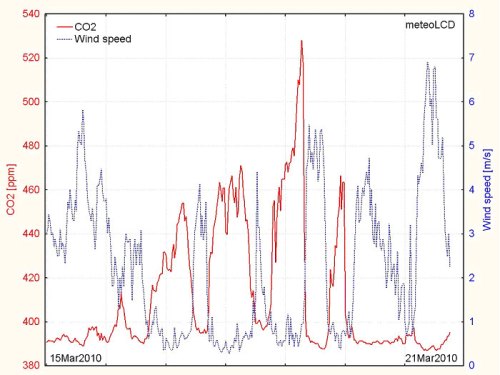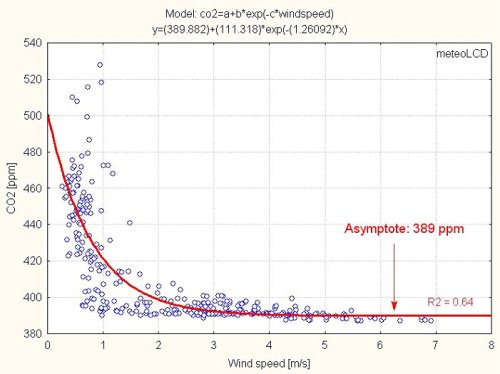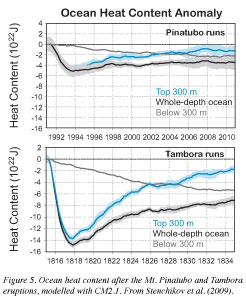A Guest Post By Troels Halken to Henk Tennekes’s Post
https://pielkeclimatesci.wordpress.com/2010/03/03/wind-power-is-no-solution-to-anything-a-guest-weblog-by-henk-tennekes/
[Troels has worked with venture investements in the renewable energy sector and the past few years as a
business developer in the wind industry. He also runs a blog on the webpage of the Danish engineering magazine Ingeniøren http://ing.dk/blogs/halken]
“Wind energy is an engineer’s nightmare. To begin with, the energy density of flowing air is miserably low. Therefore, you need a massive contraption to catch one Megawatt at best, and a thousand of these to equal a single gas- or coal-fired power plant.”
One’s nightmare is another’s challenge. A 1MW turbine is about 50 meters high and has a rotor of 50 meters and on the order of 150-200 tons. This is the massive contraption Hank is talking about. Most turbines sold in Europe and US today are 2-3MW, which in turn means that you need 300-500 and not a thousand. This is only in nominal effect, as turbines for onshore have a capacity factor in the range of 0.20-0.40 depending on site and a conventional power plant 0.8-0.9. So we’re not right back to a thousand turbines to make the same amount of electricity as a conventional plant, but not far off either.
“If you design them for a wind speed of 15 m/s, they are useless at wind speeds below10 m/s and extremely dangerous at 20 m/s, unless feathered in time. Remember, power is proportional to the CUBE of the wind speed.”
Most turbines cut in at a wind speed of 3-4 m/s, reach their nominal production at 12-15 m/s and cut out at 25 m/s. A wind turbine is not dangerous at 20 m/s or at 30 m/s. A wind turbine is dangerous when there is nothing that acts as a brake on the rotor, and since this condition of overspeed will destroy the turbine, there are several safety systems to prevent this from happening. Most turbines made today are pitch controlled, meaning that the blades attack angle can be controlled. If just one of the blades are perpendicular to the rotational direction of the rotor, it will stop the turbine. Hence there is a safety system for each blade, that is activated by the speed of rotor. With three blades there are three independent brakes. Accidents stemming from overspeed do happen. Mostly on older turbines, mostly due to poor maintenance and/or human error.
“Old-fashioned Dutch windmills needed a two-man crew on 12-hour watch, seven days a week, because a runaway windmill first burns its bearings, then its hardwood gears, then the entire superstructure. This was the nightmare of millers everywhere in the ‘good’ old days.”
Todays turbines are made to be remote controlled, and the operator can sit anywhere in the world and log on to his wind park and individual wind turbine. However there is not much to operate, as the turbines control and surveillance system employs maybe a thousand sensors and several computers, all bound together with fiber optics.
“Since the power generated by modern wind turbines is so unpredictable, conventional power plants have to serve as back-ups. Therefore, these run at far less than half power most of the time. That is terribly uneconomical – only at full power they have good thermal efficiency and minimal CO2 emissions per kWh delivered.”
Conventional power plants does not run at half power, and often they are divided into units of 600-800MW and instead of running two units at half power, you close one of them.
The economy of doing such a thing depends on the economical structure of the power station in question. For nuclear, variable costs are low and fixed cost high, hence it is most economic to run it as much as possible. In the other end there are gas turbines, where the variable costs (price of fuel) is high and fixed costs are low.
“Think also a moment of the cable networks needed: not only a fine-maze distribution network at the consumer end, but also one at the generator end.”
A wind power plant (as that is the size these come in today) has its own internal cabling and just one point where it hooks up to the grid. As the turbines are located pretty close together, in reality it is not as bad as Henk make it seems.
“And what about servicing? How do you get a repair crew to a lonely hillside? Especially when you decided to put the wind park at sea? Use helicopters – now THAT is green …!”
For onshore parks, roads are made so the turbines can be transported to the site. The repair crew uses the same road and so far this has never been a problem. Turbines has been put up in mountains and deserts and in the arctic, and this has never been a problem.
For offshore it is a little different. In the winter access to these turbines are often problematic, due to waves. It is not fun to jump from a ship in 1 meter waves with 50 kg of tools and spare parts. The waves can prevent access to a turbine for weeks or months. So if one breaks down, service personnel is flown out. The alternative is that the turbines may be stopped for weeks.
To me it does not really matter if it is green, but lets see anyway. The motor of a helicopter may be 300kW compared to the turbine rating of 3MW. It is pretty simple that the turbine only needs to produce energy for a very short time to catch up for the co2 from the helicopter. So I guess that technically it is green, if that is important.
For me it is a question of economics. A turbine that does not produce energy means that the owner of the turbine is losing money, because just like a car, the bank still wants its payments if you drive in it or not, and the same goes for turbines. And the helicopter is easily paid for.
“For that matter, would you care to imagine what happens to rotor blades in freezing rain? Or how the efficiency of laminar-flow rotor blades decreases as bugs and dust accumulate on their leading edges?”
As with anything else, ice will accumulate on them and render them ineffective. For most places on earth this is not a problem, as the ice will melt in a few days. For arctic turbines it is different. Enercon has a system that can defrost the blades and others are also working on such systems.
Dirt on the blades is a issue, but various coatings are used and some washes the blades with intervals.
“German legislation gives wind power absolute priority, so all other forms of generating electricity have to back off when the wind starts blowing.”
This has also been a problem in Denmark but it is a part of the learning curve of integrating more wind energy into the grid. In Denmark the grid operator can shut down turbines in such an event. Also the energy produced by the turbines is sold to market price plus a premium, so when there is more energy due to high wind, the price goes down and it becomes uneconomical. The system still needs fine tuning of cause, but we don’t have the same problems as you mention.
“The synchronization of the system is also a scary job : alternating currents at 100,000 volts or more cannot be out of phase more than one degree or so, else circuit breakers pop everywhere and a brownout all over Europe starts.”
Todays turbines are equipped with a full converter, so the generator is decoupled from the grid through a DC link. Power electronics and computers in the turbine make sure that the DC is turned into the desired AC again. A converter can set the phase angle as desired, and hence deliver reactive power to the grid. Even when they are stopped they can do this partly.
So no browout over Europe.
“Nowhere I have been, be it Holland, Denmark, Germany, France, or California, have I seen wind parks where all turbines were operating properly. Typically, 20% stand idle, out of commission, broken down.”
The manufacturer warrants a availability factor of at least 95%. For older turbines it is different. In order to conclude anything on turbine availability in the field, I think it best to have data.
“I am an engineer; I want to be proud of my profession.”
I am an engineer too, and I am proud of what we can do and wind energy is a very interesting field.
—
A report from the Danish think tank CEPOS has gotten a lot of attention lately. However it has been heavily criticized by experts in Denmark, on the facts, conclusions and the fact that it was paid for by the oil industry.
Wind energy is not the answer to everything. But it may be part of an answer to something.
Wind energy is not perfect yet. But in thirty years it has come a long way. But there is also a message in that. As with many other energy sources, they take time to develop into something that is economical viable.
The price of energy is not a hardcoded truth, but a variable that varies according to the cheapest alternatives. These are oil, coal and gas. Oil being the far most important of the three is the gold standard and the price varies with demand and supply. EIA has recently made public that they believe in a peak oil production within the next 20 years and that is a first for EIA. We have also seen how no new oil fields in the giant or super giant class has been found since the 80’s, e.g. we’re long past peak discovery. Looking at the North Sea, the US and other early oil sites we know that after a peak discovery comes peak production. We have seen in the time leading up to the financial crisis, that Saudi Arabia with 13% of the worlds reserves could not turn production up and hence the price of oil soared to over 100 USD a barrel and stayed there. With a looming oil peak on the horizon and the roaring economic growth of India, China and South East Asia that fuels a rise in demand, we know that oil will become more expensive and we have to fight over the leftovers. We have already fought two wars in modern times, to secure supply of cheap oil. Our sons and daughters died so we could fill the tank of the SUV with reasonably cheap gas (and Cheney’s Haliburton could make billions in windfall profits). The price has been an alienating of the Arab world and a rise in the treat of terrorism. All this for cheap oil, cheap energy.
When the price of oil goes up, the price of natural gas also goes up and partly also for coal and demand moves to the cheapest alternative. So expensive oil means expensive fossil energy. Coal is there in plenty, but even when you don’t look at co2 emissions, it is still a dirty fuel. The particle emissions from coal is accused of causing lung diseases. It is difficult to see where a given particle came from and which particle caused the disease. But we can measure them in the air and coal contributes. Diseases and deaths cost money. So from a society perspective, this adds a price premium to coal, that is hidden in the health care costs.
Nuclear takes a long time to build and hence the demand changes slowly. Nuclear has a lot of potential and we should add more of this to our energy mix. But nuclear cannot serve all the worlds energy demand, but only some of it, as there is limited uranium reserves. Fusion, the other nuclear energy, was 50 years out 50 years ago and today it is still 50 years out, hence it is not the lifeboat.
Power from coal, oil and gas means that a big part of the electricity price is made up of variable costs, e.g. the cost of the fuel. The money paid for the fuel goes to the country where the fuel came from. In Denmark we have oil and gas (but production is dropping), but no coal. In the US you have coal but not a lot of oil or gas. Wind energy means that the fuel is free. The machine that tap into this energy source is the thing that costs money. So the electricity price of wind energy is mostly made up of fixed costs and only minor variable costs (O&M), hence it is stable. The money paid for the wind turbine goes to where the parts where produced. Most wind turbine manufacturers have regional production and regional supply networks, as they are too expensive to transport around the world. So in essence, the money paid for wind electricity stays in the region for the most part.
There are other renewable sources of energy, but all have their own problems. Many of the technologies have potential but still have a long way to go, before delivering energy at a reasonable price.
One thing is possible though. To save energy. In Denmark we uses about half the energy per person as in the United States. This means that both private citizens uses less energy but also that our companies are more energy efficient. This is properly due to that fact that energy cost more over here, and then it makes a difference how much you use. With a higher energy price, this will come naturally.
Wind has come a long way the last thirty years. From simple 5KW machines to today’s mainstream 3MW machines. Today it is complicated machinery where you can find cutting edge technology within materials, testing, computer control just to mention a few. And the machines have become better at extracting energy at lower wind speeds and will continue to do so in the future. The cost of energy produced has gone down significantly. While still requiring subsidies it is now in the range of the commercial energy sources.
However none of these solve the basic problem, that some times the wind blow too little. So the wind is not our answer to our energy needs, but it has the potential to be part of the future energy mix, part of the answer.



